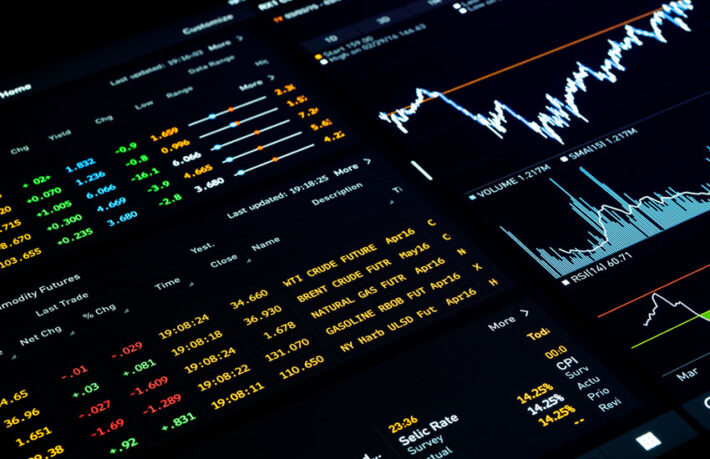What is Scalping? The Fast-Paced Trading Strategy Explained
Scalping is a trading strategy that consists of making small profits from rapid market movements. Trading of this sort involves opening and closing positions within seconds or minutes; hence, rapid analysis and execution become paramount. In this guide, we explain what scalping is, its advantages and disadvantages, as well as the main indicators and strategies for applying it successfully.
What is Scalping in Trading?
Scalping is a trading style focused on making profits from small changes in asset prices. Its main characteristic is the speed with which trades are executed, typically lasting just a few seconds or minutes.
Since the objective is to accumulate several small profits throughout the day, scalpers can make up to a hundred or more trades in a single session. For this strategy to work, it is essential to operate in markets with high volatility and liquidity.
How to Scalp?
To successfully scalp, several key factors need to be considered:
- Select an appropriate brokerage platform: Choose a broker with low commissions or one that grants volume discounts, as high charges may significantly reduce profit margins.
- Master technical analysis and chart interpretation: Since scalping is based on very short-term price movements, it is necessary to know technical analysis thoroughly and have extensive practical experience in chart interpretation.
- Advanced charts and execution speed: It is essential to have advanced charting tools and fast execution to make correct decisions on the spot.
- Agility of thought: It is important to be mentally agile to take advantage of trading opportunities as they arise.
- Market trend identification: Use indicators to understand the direction the market is taking and make decisions accordingly.
- Trade with high volumes: This means that for quick entry and exit of positions, a trader must focus on highly liquid assets.
Key Indicators for Scalping
Scalping is based on technical analysis and the use of specific indicators that help identify buying and selling opportunities. Some of the most commonly used are:
- SMA (Simple Moving Average): Helps identify trends in the price of an asset.
- EMA (Exponential Moving Average): Allows trends to be detected more quickly by giving more weight to recent data.
- MACD (Moving Average Convergence/Divergence): Facilitates the identification of trend changes and possible buy and sell signals.
- Stochastic Oscillator: Indicates possible entry and exit points based on the highs and lows of an asset.
- Parabolic SAR: Helps detect exit points and the end of a trend.
Advantages and Disadvantages of Scalping
Advantages:
- Possibility of obtaining consistent profitability if executed correctly.
- Opportunity to use leverage to operate with greater capital.
- Ability to take advantage of market volatility.
- It does not require following long-term trends.
Disadvantages:
- It can be unprofitable in markets with prolonged movements.
- It requires significant dedication and many daily transactions.
- It can be mentally exhausting due to the speed of operations.
- It may require high leverage to achieve good results.
Scalping Strategies
There are various strategies for applying scalping effectively. Some of the most popular include:
- Scalping with a stochastic oscillator: Used to detect overbought and oversold points.
- Scalping with moving averages: Based on the crossing of moving averages to identify trends.
- Scalping with the Parabolic SAR indicator: Helps determine entry and exit points.
- Scalping with ranges: Involves operating within a defined range of prices.
Differences Between Scalping and Other Trading Styles
Scalping vs. Day Trading
Day trading involves opening and closing positions on the same day, but the trades usually last several hours. In contrast, scalping focuses on ultra-fast movements and many transactions in a short period of time.
Scalping vs. Swing Trading
Swing trading focuses on taking advantage of longer-lasting trends, keeping positions open for days or weeks. On the other hand, scalping seeks small profits in very short periods of time.
How to Learn Scalping in Trading?
To learn how to scalp, it is advisable to:
- Have previous trading experience, preferably in day trading.
- Have a defined trading strategy, including capital management and the time available to trade.
- Seek out mentors or experienced traders who can provide practical guidance.
- Practice with demo accounts before trading with real money.
Scalping can be a profitable strategy if applied with discipline and knowledge. However, due to its fast pace, it requires experience and a high level of commitment to execute it successfully.
Conclusion
To learn how to scalp trade, you need to already have experience trading the markets; ideally, you should be someone who has spent some time day trading and doing short-term operations.
Keep in mind that to know if this style of trading is right for you, you will need to have a trading strategy that defines the amount of capital you have available to invest and the time you can dedicate to trading the markets.
In order to start scalping, the best approach is to find people who are experienced in this area and take advantage of their knowledge to guide you towards success.


